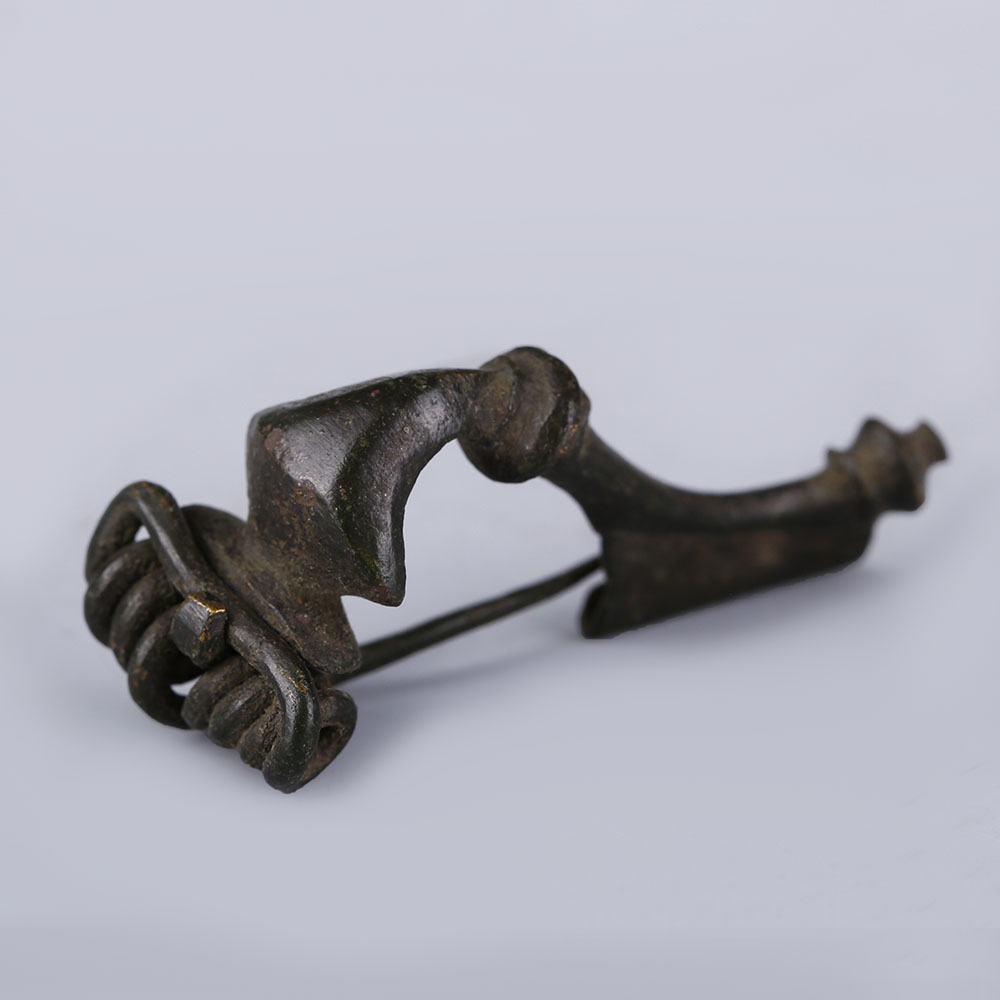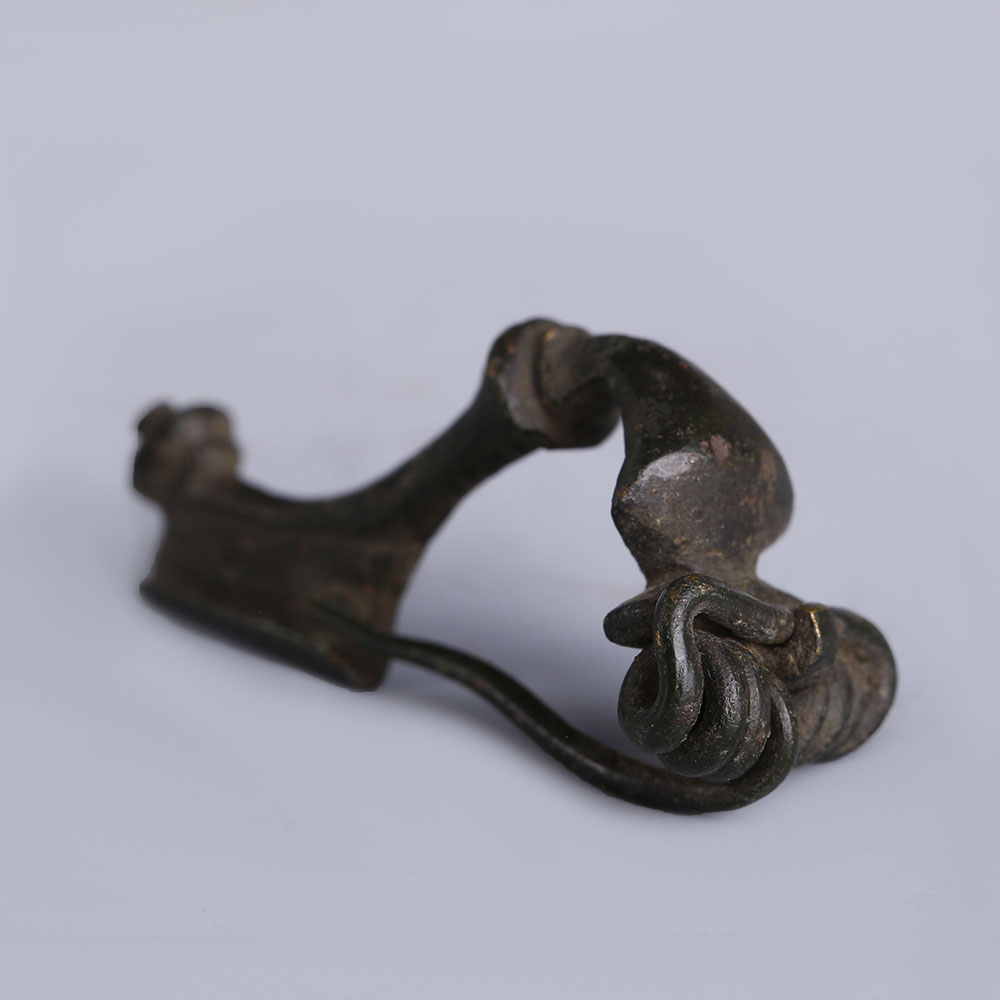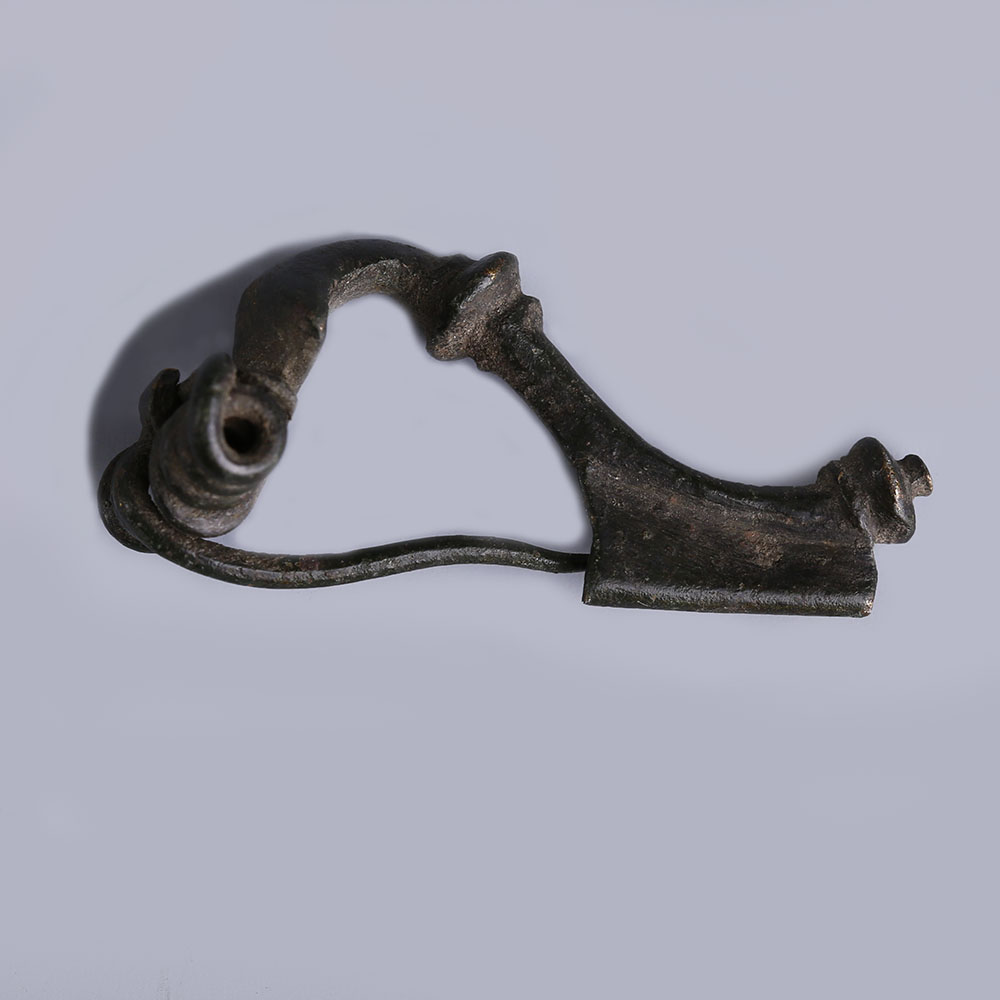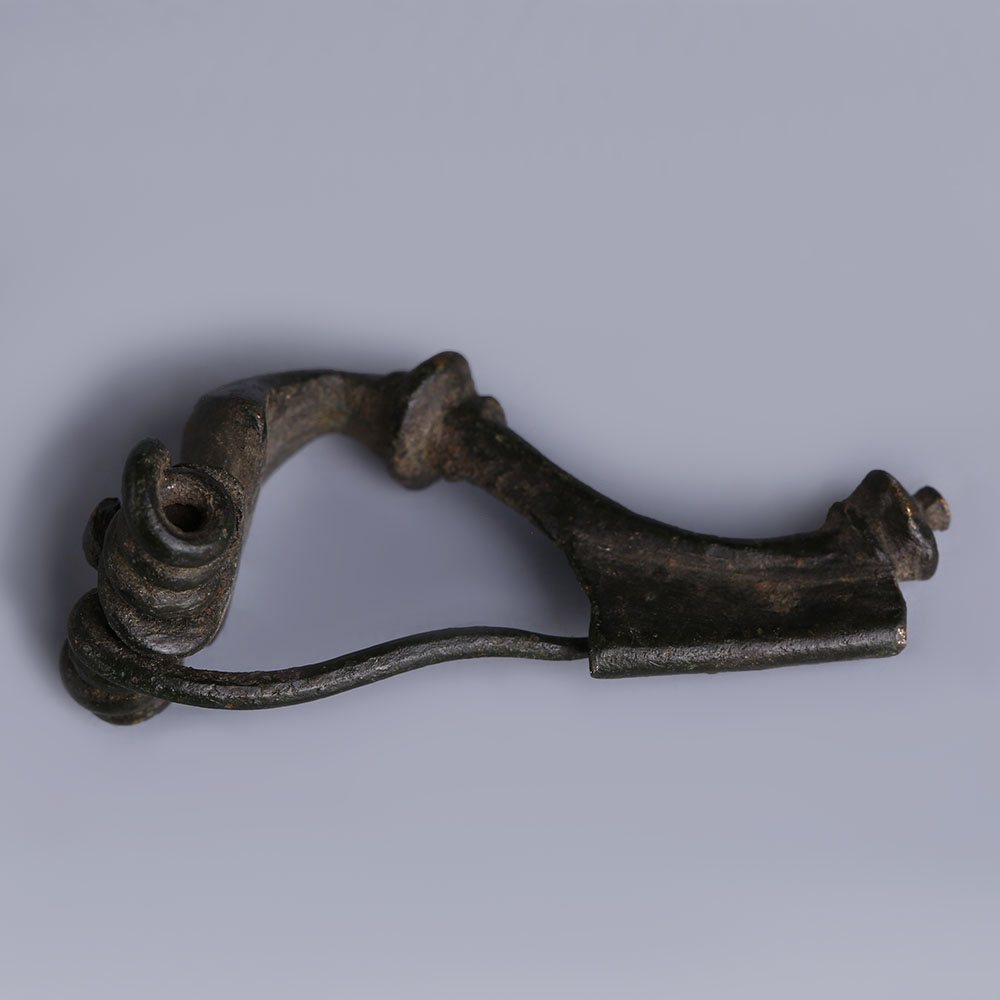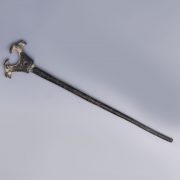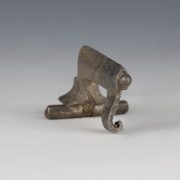Fibulae or brooches were originally used in Ancient Greece and in the Roman Empire for fastening garments, such as cloaks or togae. The fibula designs developed into a variety of shapes, but all were based on the safety-pin principle. The Roman’s conquests spread Roman culture and therefore the use of the fibula, which became the basis for more complicated and highly decorated brooches, modelled in bronze, silver and gold and further enriched with precious and semi-precious gemstones. Fibulae are the most common artefact-type in burials and settlements throughout much of the continental Europe. By the Middle Ages, the Roman safety pin type of fibula had fallen into disuse.
Roman Bronze Knee Fibula
$49.76
An Ancient Roman bronze knee fibula, composed of an arched bow with a double bulge to the central part of the bow. The fibula comes with its original pin and catch plate. Knee Fibulae have been recovered in military graves across the Roman Empire, but especially in the Pannonia region (modern Hungary), where this style is believed to have been originated from the 2nd century AD. Unlike crossbow fibulae, which were worn as a symbol of rank in the Roman army and civil service, knee fibulae were almost exclusively worn by soldiers.
Condition: Complete and intact with nice dark patina to the surface.
SOLD
| Weight | 8.2 g |
|---|---|
| Dimensions | L 4 cm |
| Culture | |
| Metal | |
| Region |
